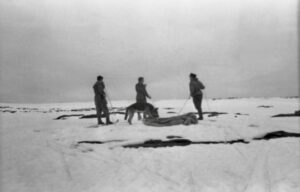What is the longest straight-line walk on Earth? This is one of those questions so simple that a child could ask it, but the answer is so complicated that it took a physicist, an engineer and a lot of computer horsepower to figure it out.
The walk spans two continents and 15 countries. Starting in China, it runs through Mongolia, Kazakhstan, Russia, Belarus, Ukraine, Poland and the Czech Republic. It then traverses Western Europe via Germany, Austria, Liechtenstein, Switzerland, France and Spain, before finally ending in southern Portugal. In total, it is a staggering 11,241km. As far as we know, no one has ever done it.
Calculated by physicist Rohan Chabukswar and engineer Kushal Mukherjee, the route appears as an arc on a two-dimensional map because of the curvature of the earth, but it is actually a perfectly straight line.
In 2012, reddit user Kepleronlyknows (in real life, an American environmental lawyer named Patrick Anderson) posted a map showing the longest straight line that can be sailed without hitting land. This post inspired a lot of heated debate on the longest straight-line distance that could be walked. Intrigued, Chabukswar and Mukherjee set out to find the answer.
Looking at every possible route would have meant juggling 233 million great circles (all straight line paths lie on a great circle) with 5,038,848,000,000 individual points. Impossible for a person but well within the limits of a computer algorithm. In 2018, the pair published their paper called, “Longest Straight Line Paths on Water or Land on Earth.” As the title implies, they also analyzed the longest straight-line sailing route. They concluded that the original one posted by Kepleronlyknows was correct.

The longest sailing straight-line route.
Chabukswar and Mukherjee define their overland route as “drivable” but point out that they approached the problem “as a purely mathematical exercise.” The route doesn’t consider terrain, rivers, mountains or other obstacles, so anyone ambitious enough to take this on will likely bump into some interesting hurdles.






